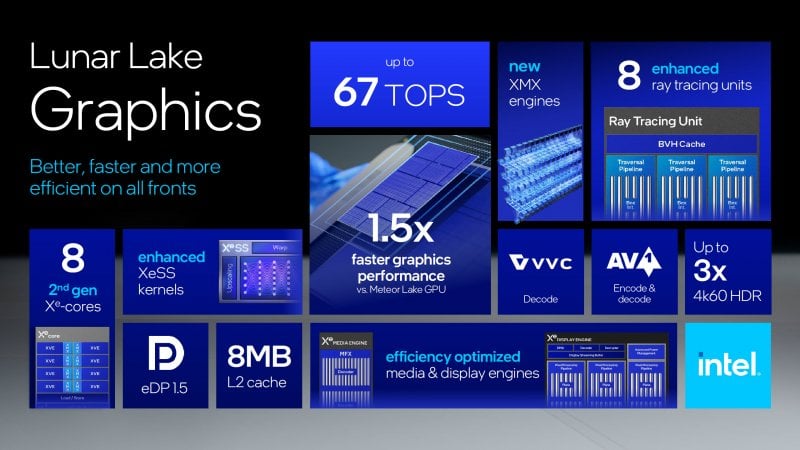The F1 24 demo in Taipei showcased the potential of Intel’s new Xe2 technology in gaming, promising an improved gaming experience at 1080p and 60 FPS.
During the recent Intel Technology Tour in Taipei, Intel showed an exclusive preview of the capabilities of its next generation Lunar Lake processors with Xe2 GPU, showing the game F1 24. This title, one of the first to support XeSS technologywas used to demonstrate Intel’s remarkable advancement in graphics by confirming day-one support for the latest GPU features in a major AAA game.
Technical Performance
The presentation of F1 24 took place on an unspecified Lunar Lake processor, equipped with the Xe2 GPU, keeping the game within the 17W power budget. Configured at Full HD (1080p) resolution with high graphics settings, the game showed XeSS performance modes with ray traced shadingreaching according to Intel, a constant and fluid frame rate of 60 FPS (although there was no counter to evaluate its veracity).
With Xe2, Intel is not just aiming to miniaturize the graphics architecture, but to expand it across all platforms. Petersen also revealed that with Xe2, Intel has delivered numerous adjustments to improve compatibility and support the latest APIs.
New frontiers
Intel is also exploring further innovative approaches such as GenAI, a promising evolution that could revolutionize the way games interact with GPUs. Intel’s Tom Petersen discussed this new direction, explaining how the interface between the game and the graphics subsystem could evolve beyond traditional DirectX calls.
The idea is to use intelligent algorithms that can synthesize entire graphic scenes autonomously, without explicit commands. This type of technology, while not yet in the imminent stage of implementation, certainly represents an exciting future direction for computational graphics.
#Intel #shows #power #Lunar #Lake #GPUs #bets #future



